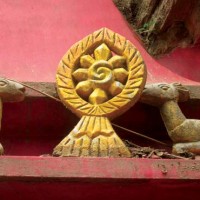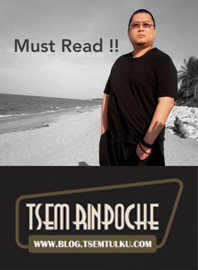
In the medium scope, one must practice mainly the three high trainings – with the greater emphasis on the training of ethics.
The medium scope include the practices as that will cause one to gain the definite excellence of liberation – such practices as abandoning [the first two] four truths, engaging in [the last of the two truths], and the practice of the three high trainings.
We train the mind according to the part of the path we share with the medium scope expressly so as to develop renunciation in our mindstreams, not actually to tread the medium-scope path.
In this medium-scope section of the lamrim, you must develop thoughts of yearning for liberation. There are two ways of developing these: by thinking about the nature of the four truths, or by thinking about the twelve links.
Each of the three scopes contains its own version of the [first] cause of taking refuge. For the medium scope: fear of samsara.
Nevertheless renunciation is the principal path in the medium-scope section. Following the development of renunciation in our mindstream, any virtue we create will be a cause for our liberation.
As long as we have not developed even a contrived form of the principles of the path, such as renunciation, any virtue we create will usually only turn samsara’s wheel.
Dharma Protector of the Medium Scope
Vaishravana is the lord of Dharma of the medium scope. The Maharaja Vaisharavana promised before Buddha to principally guard the vinaya part of the three baskets, as well as the high training of ethics from among the three high trainings.
Chapters of the Medium Scope of study
- The General Sufferings of Samsara;
- The Sufferings of the Higher Rebirths
- Understanding the Causes of Samsara; The Path to Liberation
Source: Liberation in the Palm of Your Hand by Kyabjye Pabongka Rinpoche.








